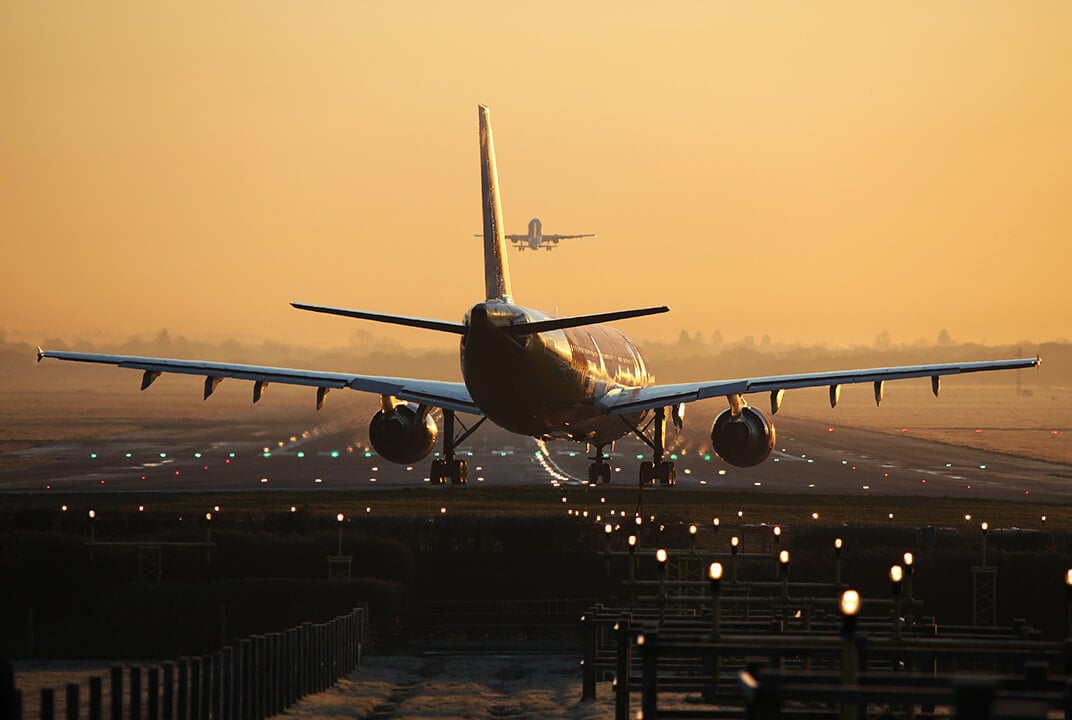Insight | Reliable and robust satcom are critical to unlocking the potential of autonomous aviation
Reliable and robust satcom are critical to unlocking the potential of autonomous aviation
null
Enabling one person to remotely control multiple aircraft will allow for autonomous middle mile air transportation. This is where Inmarsat’s burgeoning partnership with Xwing is already bearing fruit.
Enabling one person to remotely control multiple aircraft will allow for autonomous middle mile air transportation. This is where Inmarsat’s burgeoning partnership with Xwing is already bearing fruit.
Mention unmanned aerial vehicles (UAVs) – or more specifically drones – to most people and they’ll assume you’re talking about the small-size airframes that tend to dominate mainstream perception of the space. However, the scope – and potential – of the unmanned aerial systems (UAS) market doesn’t begin and end with these smaller aircraft.
Take San Francisco-based technology company Xwing for instance. Since being founded in 2016, the company has specialised in building the key technological parts that are required for autonomous aviation. Autoflight or autopilot systems on board the aircraft, command and control systems and detect and avoid systems for instance.
However, rather than focus on the smaller airframes, Xwing is concentrating on larger, more traditional cargo aircraft. In particular, the Cessna Grand Caravan, its primary test aircraft.
“A lot of aircraft can fly on autopilot,” explains Jesse Kallman, Xwing’s Vice President of Commercialisation and Strategy. “It's typically engaged above 500 feet off the runway. A lot of the inflight portions are on autopilot. But when it comes to the actual remote operations, that's a totally different ballgame. Being able to actually fly the aircraft gate-to-gate remotely. So, from start up to the pre-flight checks to the taxiing, to the communication with air traffic control, doing all of that remotely is a totally different challenge to what you see in a traditional autopilot.”
Being able to fully realise the potential of autonomous aviation is Xwing’s ultimate ambition. And that means one person being able to remotely control multiple aircraft from one operation centre. “That's what a lot of cargo operators, for example, are really interested in,” Kallman says. “Looking at that space where they've got the remote operations station and one pilot is able to control three to five, aircraft.”
“If it’s satcom, it’s Inmarsat”
When Kallman joined Xwing from Airbus earlier this year, one of his primary objectives was finding a satcom partner. Previously, the company had undertaken test flights that had been conducted on terrestrial connectivity networks, which were fine for flying around airports. But to fully realise Xwing’s vision of autonomous aviation, satcom is a must.
Kallman spoke to some of his former colleagues at Airbus and Inmarsat, and in particular, our Senior Director Commercial UAV & UTM, Anthony Spouncer, kept getting mentioned. In May, the first discussions between Xwing and Inmarsat began. Within a month, Xwing had the prototype hardware, began integration and started testing – a testament to the speed of operation that has come to define the UAV space.
It has also tested another of our partner’s hardware: Cobham’s AVIATOR UAV 200, an airborne terminal that allows for Beyond Visual Line of Sight (BVLOS) operations. “We’ve flown both on the aircraft,” Kallman explains. “We’ve actively controlled the aircraft over Inmarsat’s satellite network, and tested Cobham hardware.”
Such is the innovation involved in Xwing’s operations, the BBC was invited onto the former test flight, in which the aircraft, with a reporter onboard, was flown around San Francisco’s iconic Golden Gate Bridge. “If we do anything beyond fly around our primary test airport in California, it’s satcom. And it’s Inmarsat,” Kallman points out.
Collaboration a catalyst for innovation
For a fledgling relationship, much has been achieved already – witness the aforementioned BBC demo flight. Kallman, in particular, has been impressed with the collaborative approach Inmarsat has undertaken. “I know larger companies can be difficult because they've got so many things going on,” he says. “But we haven't seen that at all. They've been great to work with. They've been dedicated, given us a lot of resources and answered questions, particularly when the team was integrating and getting on the network for the first time. It's been really, really positive.”
Current innovations, alongside test flights, are the integration of remote voice for the aircraft – so the remote operator can communicate with air traffic control via the satcom link – and reducing latency.
As for Xwing’s ultimate ambitions, Kallman notes these are predicated upon being a pioneer in the autonomous aviation space. And specifically enabling the network and infrastructure of middle mile air transportation – namely transporting larger cargo loads and, ultimately, people through autonomous solutions. “Not just a couple of cargo routes here or there,” he points out, “but actually enabling small aircraft to move people, things… all the markets that are not currently served because of the costs or complexities that are associated with this mode of transport today.”
Helping overcome the challenges of regulation
As well as enabling Xwing to unlock its potential via satcom, Inmarsat and Xwing are also partnering to overcome the regulatory process that currently challenges the space. “We’re trying to do something that’s new and we’re trying to do it within a regulatory structure that was not designed for something like this,” he concedes.
Having a trusted partner like Inmarsat helps Xwing deliver the information and reliable data needed for regulators. Inmarsat and Xwing are also collaborating when it comes to establishing – and demonstrating – the business case for remotely piloted aircraft. “If we’re going to a cargo operator and discussing the benefits of providing them autonomous aviation, we have to save them money or there has to be new efficiencies,” he explains.
“You have to understand the business case. And that’s critical. Right now, the cost structures are still complex. The technology is new, and volumes are low. But once we get to a point where companies are adopting at a large scale, the impact on customers also scales, along with passing the benefits on to your suppliers and so forth.”
By simplifying cost structures, Inmarsat helps Xwing make it less complicated for the moving parts across its business.
Business opportunities and the case for sustainability
These efforts to prove to regulators that autonomous aviation is safe and, likewise, to establish a business case, are certainly warranted. Kallman believes the transformational potential of opening up aviation to new parts of society across the world is immense.
“The excitement is opening up what small aircraft can do from leveraging smaller markets, smaller airports, more point-to-point transport, more individualised travel, cargo, moving goods to areas that couldn’t be served previously because of costs or infrastructure constraints… There’s an unbounded opportunity here,” he enthusiastically explains.
This opportunity is made clear with the news that following Xwing’s recent successful test flights, the company secured investment to the tune of $40m in venture capital earlier this year, bringing its total funding to date to $55m. This has enabled Xwing to begin scaling production and double its headcount since April.
And as well as providing Xwing with business opportunities, there are wider advantages too. Sustainability comes into play here. As routes become more predictable there are a raft of operational efficiencies to exploit – including fuel reduction. And there’s more potential for increased optimisation too.
Throughout, this spirit of collaboration between Xwing and Inmarsat is vital. With both parties complementing each other. “I see Xwing and Inmarsat being really close, long-term, go-to-market partners,” concludes Kallman. “We’re providing a lot of core technology and Inmarsat is helping us connect it to more and more aircraft. As the technology rolls out, fleet sizes will continue to grow. So I see Inmarsat as being the key technical backbone in helping us enable communication between those aircraft and their pilots. Our relationship with Inmarsat is critical.”


